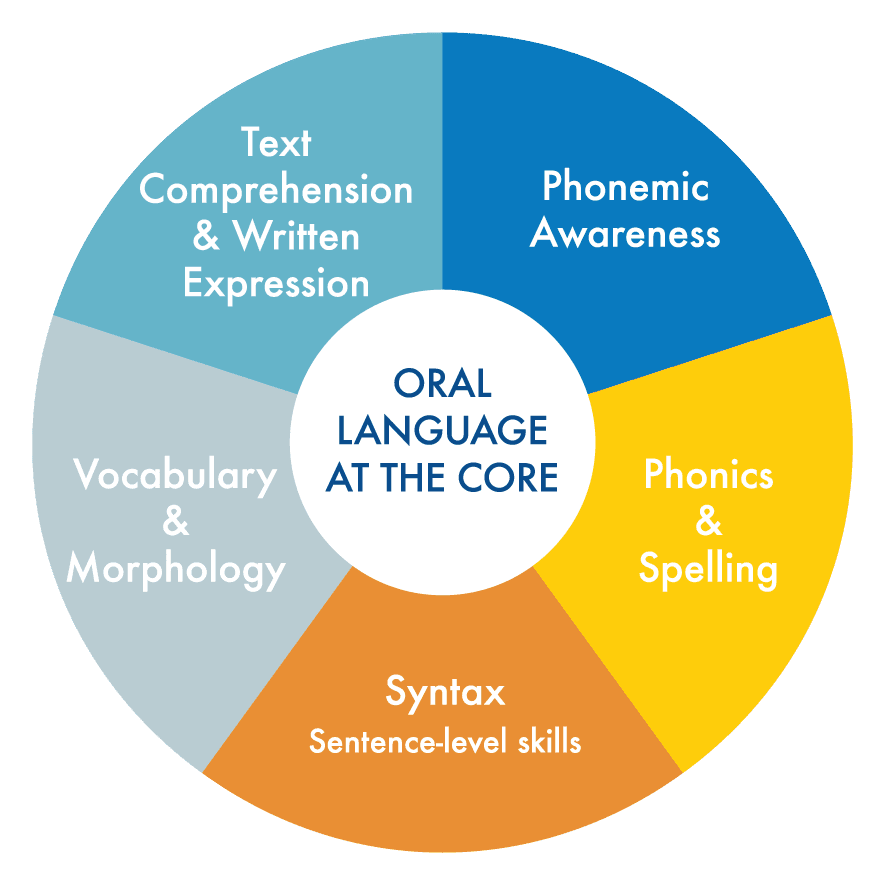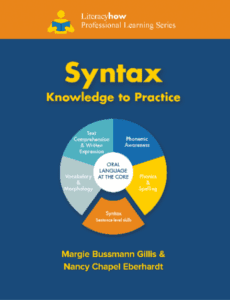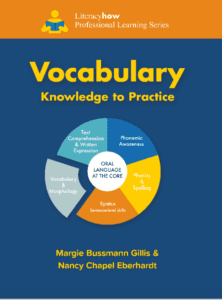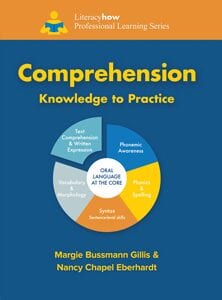The Literacy How Reading Wheel
The Literacy How Reading Wheel depicts the essential components of comprehensive literacy instruction. In addition to those identified by the National Reading Panel, it positions oral language—speaking and listening—at the core of the wheel as the foundation for learning to read.
Our model also includes spelling (with phonics), syntax, morphology (with vocabulary), and written expression (with text comprehension). It expands the concept of fluency to encompass all aspects of literacy development. Fluent, or automatic, performance in both discrete (e.g., word recognition) and complex (e.g., comprehension, composition) literacy skills is essential to be a proficient reader and writer. We help teachers and administrators build their knowledge in this content, then apply it in the classroom.
Click on the bars to the left of the wheel to explore each component.


Learn more about the components of
Comprehensive literacy instruction
What is the definition of this essential component?
Frequently asked questions about the importance of this component.
Teacher tips for putting knowledge into classroom practice.
Tips for principals on observing and supporting instruction.
Read more, learn more about evidence-based instruction.
Literacy How Professional Learning Series
The Literacy How Professional Learning Series translates the latest reading research into how-to instruction. The Knowledge to Practice book Series—Phonemic Awareness and Phonics, Syntax, Vocabulary, and Comprehension—is based on the current and comprehensive Literacy How reading model. It draws upon the authors’ decades of expertise and experience working with thousands of general and special education teachers. The Series emphasizes Pre-K-3rd grade conceptual and skill development. Teachers of older emerging or struggling readers will also find these tools useful.

Phonemic Awareness and Phonics—the keys to breaking the code!

Syntax is essential—even for beginning readers!

Vocabulary knowledge is essential for effective comprehension!

Comprehension is the goal of reading—even for beginning readers!